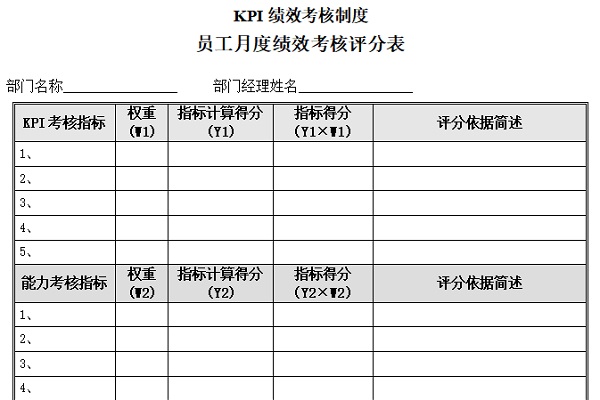
Performance appraisal system template principles
1. Strict system
Performance is an examination of employees’ past and present, as well as a prediction of their future behavior. Only when performance appraisal activities are institutionalized and carried out regularly can we fully understand the potential of employees, discover the problems of the company, and achieve efficient operation of the company.
2. Clear goals
As a management tool, performance appraisal must be combined with related personnel activities. These personnel activities include recruitment, promotion, training, and a combination of salary adjustments and rewards and punishments.
3. High transparency
The performance appraisal system must be sufficiently transparent. First of all, it must be unanimously recognized by the entire bank. Secondly, the assessment standards must be very clear. Assessment work can be carried out between superiors and subordinates through direct dialogue, face-to-face communication, etc. Black-box operations will not work.
4. Timely feedback
Only by providing timely feedback on the results of performance appraisal can deficiencies in the appraisal work and business management activities be discovered. An assessment system that lacks feedback is of little significance. It can neither function as a capability development nor is it necessary to be independent as part of the management system.
5. Strong operability
The assessment system must be within the limits of human, financial and material allowances, which requires assessors to design the assessment plan based on the goals and take into account the cost-benefit ratio and the impact of potential factors on the implementation of performance assessment.
Performance appraisal system template standard
(1) Reliability. It refers to the degree of consistency of the performance appraisal system. An important type of reliability is assessor reliability, which is the degree of consistency between assessment subjects. Commonly used methods to evaluate reliability include: test-retest reliability, intra-rater reliability, and internal consistency testing of the assessment scale.
(2) Validity. It refers to the effectiveness of the performance appraisal system in evaluating all relevant aspects related to performance.
(3) Consistency. It refers to the degree to which the performance appraisal system is consistent with the organization's strategic goals and culture.
(4) Acceptability. It refers to whether the person using the performance appraisal can accept it.
(5) Clarity. It refers to the extent to which the performance appraisal system can provide employees with clear guidance on what the organization's expectations are and how to meet these expectations.
The editor recommends:
The performance appraisal system template is a free template. You can get the source file by downloading it, which can be edited, modified and replaced by you. Huajun Software Park also providesEmployee performance appraisal system template,Employee performance interview content sampledownload.






































it works
it works
it works